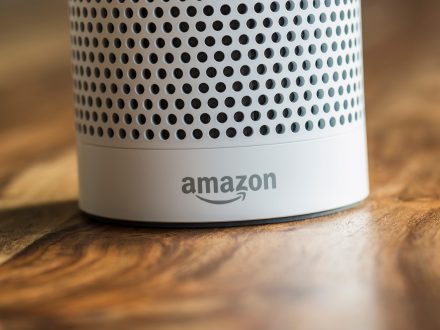AI, Amazon, and the future of voice technology in retail

The technological advancements of our time make it difficult to remember life before the internet. Smartphones and dependable wifi are mainstays of our lives, and most everyday activities — like ordering lunch, reading the news, and catching up with friends — are now fully digital experiences. This aspect of modern society has also transformed how we shop and communicate with retailers.
First in-store, then online. What’s next?
There are several clear benefits of the traditional in-store experience. It can be a highly personal touchpoint, with retail associates and a customer service team available onsite to answer questions and help shoppers find products. Physical stores are designed to facilitate browsing, and they’re usually organised to showcase certain items front and centre.
Perhaps most importantly, they’re also highly tactile and carry emotional weight, allowing customers to try on clothes, feel material between their fingers, and test out technical capabilities in person. However, brick-and-mortar shops also involve their fair share of frustrations: Consumers may have to navigate packed car parks, wait in long checkout lines, or fruitlessly hunt for out-of-stock items.
Plus, it takes time to get there, which they have to do before the store closes for the day.
Online shopping emerged in the mid 90s and was thought to solve the challenges of the in-store experience.
This channel has since continued to grow as a preferred shopping method for Australian consumers. More recently, we’ve seen the rise of mobile commerce, which affords even greater convenience and efficiency.
Despite this, e-commerce is not always adequately executed to reap its full benefits. Questions go unanswered in product descriptions or FAQ sections, or bad user interfaces make it hard to find what you’re looking for.
With much to improve on, consumer expectations on the rise, and new technology at our fingertips, the third wave of digital is upon us to redress the limitations of this web-based experience.
Artificial intelligence (AI) will change ecommerce as we know it through powerful conversations that give consumers the best of both worlds: a convenient, more efficient digital experience that’s as personalised as it is interactive.
Conversational commerce is coming to retail
By now, AI is seeing widespread adoption, allowing brands to re-imagine what has historically been a static shopping experience. Consumers are developing a familiarity with the voice assistants that let them interact in a user-friendly way.
Amazon, for example, is already capitalising on the popularity of Alexa by building the interface into its much-hyped Prime Day, with deals last year available to voice shoppers before anyone else.
With Alexa’s recent entrance to the Australian market, we will likely see similar offerings this Prime Day.
While consumer confidence in voice ordering still has some way to go, the convenience it grants will bring it into the mainstream sooner rather than later. A similar conversational format is beginning to emerge on retail sites – as messaging.
By the end of 2018, retail and sales will be centred around brand-to-consumer conversations. Personal shopper bots will take over from customer service agents, asking questions to assess a customer’s tastes and recommending items accordingly, or proactively guiding them to the specific products they’re looking for.
As a two-way dialogue, conversational interfaces will also facilitate customer feedback, which, in turn, will train bots to better understand consumer preferences. In this way, bots will become more than an automated response system of FAQs.
They will mature into tailored personal assistants for – and experts on – every retail customer. The success of this transition is dependent on brands and consumers alike learning to view bots as tools that can create efficient, effective, and personalised experiences.
We’ve seen the internet come to the fore, followed by the rise and wide acceptance of smartphones and apps. This year, brands will encounter the next wave of change: the overhaul of the online shopping experience, as conversational experiences replace today’s hopelessly broken mobile web experiences. Driven by AI and the rapid adoption of messaging by brands, conversational commerce will transform the retail industry as we know it.